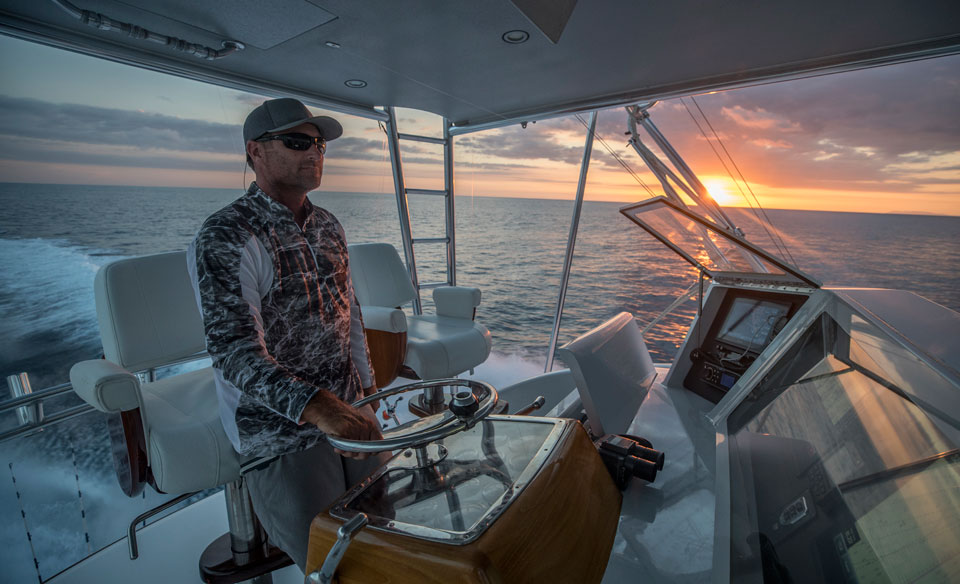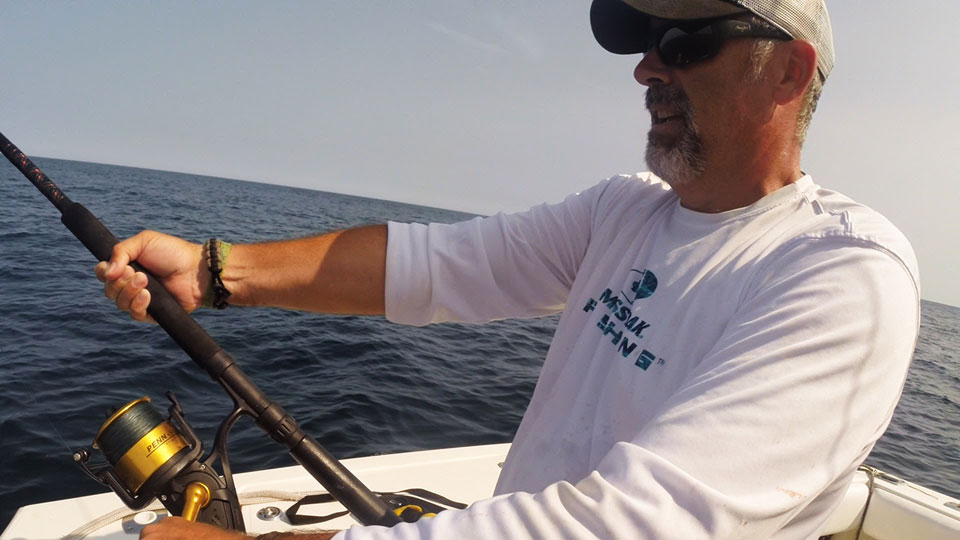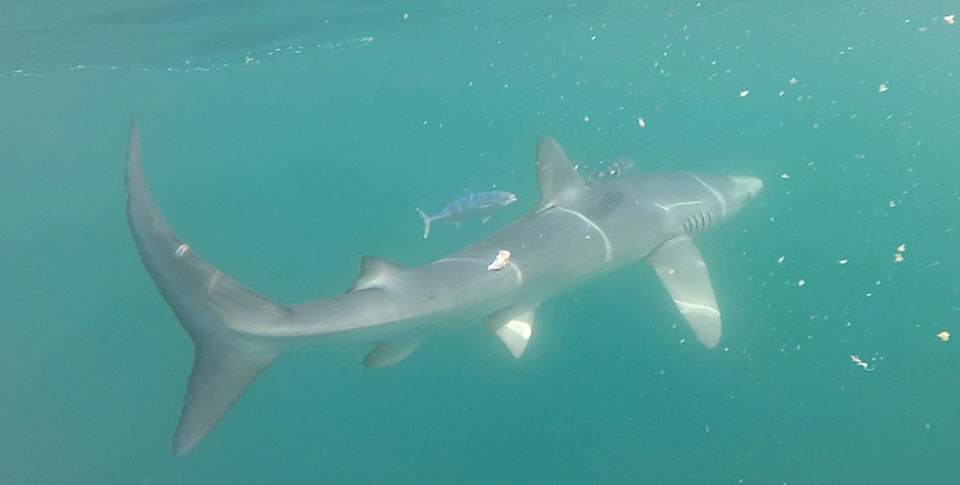Captain Bob Humphrey
Fishermen are inexorably drawn to the sea and nowhere does saltwater fishing have a more storied past than off the coast of New England, where a once vast and seemingly limitless resource first attracted Old World settlers to the New World. Today, commercial fishermen share the sea with a now thriving sport fishery. Most sport anglers battle the beachfront’s pounding surf for striped bass or cruise the bays and inlets for mackerel and bluefish. But a few bold lads venture far offshore to face off against the largest predators in the ocean, and in late August when the water heats up so does the shark fishing.
Anglers in areas like the Gulf Coast, Florida and even the mid-Atlantic states can find nearshore sharking opportunities, but New England’s sharks are highly migratory pelagic species, and those seeking them must typically travel 20 miles or more offshore to find them. That calls for a larger, more seaworthy vessel, though experienced mariners can use smaller boats if they’re mindful of the weather.

Blue sharks are by far the most common species, and generally run from four to 10 feet, though larger specimens weighing 300-400 pounds occasionally occur. It’s also not all that unusual to hook a porbeagle, thresher or mako, which can run even larger.
Makos can be particularly exciting, and dangerous as they’re known for their blistering runs and acrobatic leaps, which occasionally land them unexpectedly and prematurely in the boat.
Tackle consists of heavy rods, rated for 50-100-pound test line, 50 or 80-class lever - drag reels loaded with 400-600 yards of 80-pound-test braided line with a 100-yard topshot of 80-100-pound monofilament. Similarly equipped spinning reels offer an added challenge if you’re willing to take it.

To that you attach a 10-12-foot 200-plus-pound steel leader. Hooks generally run in the 10/0-12/0 range. Circle hooks, required in some areas, do slightly reduce the incidence of deep hooking, but are much more difficult to remove if you’re fishing catch and release.
Steel leaders should be long enough to prevent chafing off from contacting the sandpaper-rough skin or sickle-like tail of the shark, and stout enough to prevent being bitten off or broken by toothy fish that may weigh up to 600 pounds, sometimes more.
Shark fishermen generally look for temperature breaks and warmer water as well as structure, shallower seamounts that concentrate bait in the deep offshore waters.
The most common method is to drift along with the wind and current while chumming heavily. Anglers may also drip bunker oil. Sharks use their extremely sensitive scent detection organs to can pick out the tiniest trace of fish oil or blood in the water, and follow it to its source.

The experience of battling a fish that weighs as much as or more than you do is indescribable. It will test both your strength and endurance as battles can last 5 minutes to 5 hours.
New England’s shark fishery is available to anyone with the means of reaching it and the proper equipment. Caution and safety are always advisable when on the ocean but especially when fishing for creatures that outweigh the angler and if given the opportunity, might even try to eat them.
Bob Humphrey is a U.S.C.G. licensed captain and a registered Maine guide who runs shark and giant bluefin fishing charters.



























